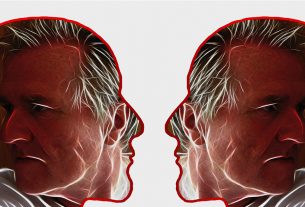Internet addiction is increasingly becoming prevalent in India. Psychiatrists say that it affects adolescents and young people the most.
T.S Jaisoorya, psychiatrist at the National Institute of Mental Health and Sciences (NIMHANS) in Bengaluru believes that males are most likely to get addicted to the Internet. Elaborating on the demographic most likely to be affected, he said, “Internet addiction is not uncommon among adolescents and young people, and males are most likely to get affected.”
The prospect of Internet addiction looms in India with reports suggesting that by 2020, the country is expected to have 730 million Internet users as opposed to the 620 million in 2019.
“One can be addicted to pornography, to Netflix, YouTube, gaming, social media, compulsive buying, etc”, Jaisoorya said. Clinical Post-Doctoral Fellow Furqan Ali discussed the nature of Internet addiction. “There is a phrase called behavioural addiction that is not based in substances.” Furthermore, each individual has a pattern of addiction.
That said, one does not get addicted overnight. “Addiction develops over two years”, Jaisoorya explained. “People do not control their Internet usage.” A 2017 paper titled ‘Study of Internet addiction: Prevalence, pattern, and psychopathology among health professional undergraduates’ explores the prevalence of Internet addiction. A cross-sectional study was conducted among 846 students of various faculties from a Deemed University wherein students were assessed with semi-structured data, Internet addiction test, and mental health Inventory.
The test classified students as ‘normal’ and ‘addicted’. The test found the total prevalence of Internet addiction to be 19.85 percent with moderate and severe addiction being 19.5 percent and 0.4 percent, respectively. The study found male gender, login status, emotional ties, and psychological distress as significant predictors of Internet addiction among students.
Jaisoorya was definitive on what constitutes an addiction. “When using the Internet is a part of your job, you can’t call it an addiction. For e.g.; professional gamers have to be online for extended periods of time. It does not necessarily mean that they are addicted to the Internet.” “If dysfunction is a part of the social occupation, it becomes an addiction”.
Both Jaisoorya and Ali believed that Internet addiction was linked to other illnesses. Hence, the treatment involves addressing the underlying cause. “When one is not socially competent, Internet acts as an ‘escape from reality’, Jaisoorya explained.” “If one has personality issues, he may look at the Internet as a source of companionship”, Ali added.
Elaborating further, Ali said “if an adolescent has Attention Deficiency Disorder (ADD), he may play video games to attain a ‘rush’. Similarly, a depressed individual would seek the Internet for a dopamine release.”
With regards to treatment, Ali explained that non-pharmacological management are used namely; Behavioural therapy, cognitive therapy, mindfulness as well as correcting habits. “Apart from cutting the addictive stimuli, we try and encourage other stimuli,” Jaisoorya remarked. “For eg; we may encourage patients to take up a course where face to face interaction is required.”
The process of rehabilitation depends on the underlying illness. “There is a chance that functioning could get back to normal,” Jaisoorya said. Drawing an analogy between icebergs and Internet addiction, Ali explained, “Only one third is visible, and the two-third goes undetected or is unrecognized by family members. It takes a trained eye to identify underlying reasons.”





